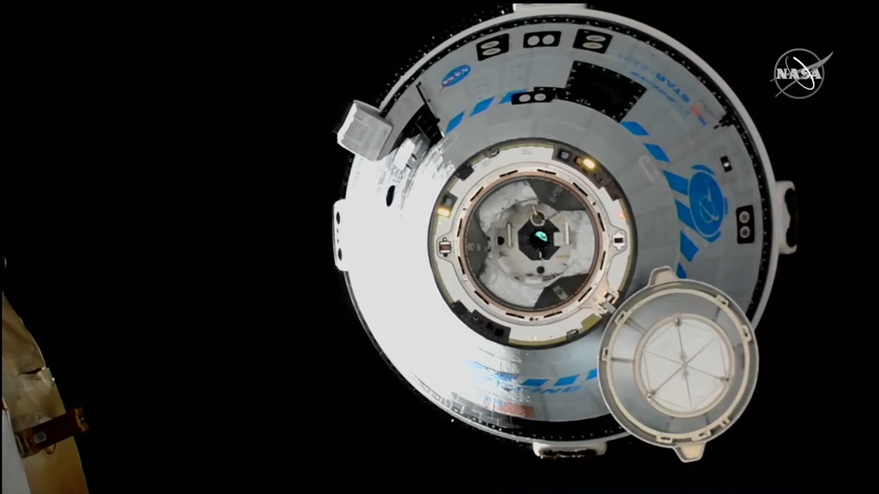TITUSVILLE, Fla. — Boeing’s CST-100 Starliner spacecraft successfully docked with the International Space Station May 20, a little more than 24 hours after its launch.
The spacecraft docked with the forward docking port on the Harmony module of the station at 8:28 p.m. Eastern. Controllers reported a hard docking securing the spacecraft to the station about 20 minutes later, although hatches separating the spacecraft from the station won’t open until around 11:45 a.m. Eastern May 21.
The docking took place more than an hour later than the original schedule as controllers worked through several minor issues. That included the spacecraft’s docking ring, which needed to be retracted and extended again before the spacecraft could make its final approach.
“To the joint Boeing and NASA team, the crew of Expedition 67 would like to offer our congratulations on this momentous occasion,” NASA astronaut Bob Hines, currently on the station, said after the docking was confirmed. “Today marks a great milestone towards providing additional commercial access to low Earth orbit, sustaining the ISS and enabling NASA’s goal of returning humans to the moon and eventually to Mars.”
Neither NASA nor Boeing provided updates about the status of the Orbital Flight Test (OFT) 2 mission for more than 17 hours after a postlaunch briefing May 19, an unusual silence that raised concerns that there was a problem with the spacecraft. A Boeing spokesperson told SpaceNews that the company would provide an update about the mission “in a bit” but the company did not release that update until more than three hours later.
In that update, Boeing confirmed that the spacecraft was generally in good condition, having conducted several tests as planned. One issue was “off-nominal behavior” of a thermal cooling loop on the spacecraft, but the company said the system was still maintaining stable temperatures.
The other issue was the failure of 2 of 12 aft-facing Orbital Maneuvering and Attitude Control (OMAC) thrusters during the spacecraft’s orbit insertion burn shortly after launch. In the statement, Boeing said a drop in chamber pressure likely caused the thrusters to shut down.
Other OMAC thrusters continued to work well, performing several maneuvers as the spacecraft approached the station before smaller reaction control system thrusters took over for the final approach. The OMAC thrusters will not be used again until the spacecraft’s deorbit burn at the end of the mission.
